Tom's Guide Verdict
Google Stadia is novel, and potentially democratizing, but it's ultimately half-completed and full of inconveniences.
Pros
- +
Game streaming usually works well
- +
Compatible with all controllers and most displays
Cons
- -
Less stable performance, compared to PC or console
- -
Missing many promised features
- -
Limited smartphone compatibility
- -
Unambitious game lineup
Why you can trust Tom's Guide
Update (Sept. 29, 2022): Google announced that it will shut down Stadia by January 18, 2023; all Stadia hardware purchases made through the Google Store, and all game and add-on content purchases made through the Stadia store will be refunded.
Google Stadia is just a little bit worse than using a gaming console. That's both praise and condemnation.
Platforms: TV, computer, smartphone
Resolution: Up to 4K
Network Requirements: 35 Mbps (4K) / 10 Mbps (minimum)
Game Library: 40+
It's impressive that Google is able to stream big-budget games with few compromises, leveraging technology that people already own. On the other hand, it's disappointing that the experience comes with so many caveats.
If game-streaming is really the future of gaming, Stadia is a good argument for letting the technology mature for at least another few years.
The moment-to-moment gameplay experience on Stadia isn't bad. It's usually a very smooth process, not noticeably different from playing a game on a console or moderately powerful PC. But the whole setup has a thousand small problems that nipped at my heels every time I thought I was finally getting into the Stadia groove.
The streaming was never as seamless as I wanted it to be. TV, laptop and smartphone streaming all have bizarre (and different) limitations. A number of important features are still missing, with only vague hints of release timetables.
My biggest takeaway from my Google Stadia review, though, is that I simply don't understand who needs it. The ability to play games anywhere, on any platform, is appealing — sure. But that need comes up less often than you might think in the course of an everyday routine.
Get instant access to breaking news, the hottest reviews, great deals and helpful tips.
It's also appealing to think that aspiring gamers can now jump into big-budget mainstream titles without having to drop $300 on a console like the PS4 Pro or Xbox One X, or much more than that on one of the best gaming PCs. But is there really a huge audience that's been waiting breathlessly all these years to play Destiny, or Tomb Raider, or Just Dance, but is also unwilling to buy a gaming platform?
As an experiment, Stadia is novel and potentially democratizing. But as a reality, it's just another way to play some extremely common and not terribly new video games, but with a few extra perks and a lot of extra inconveniences.
Google Stadia review: How it works
Normally, I'd begin a review by describing a product's hardware, but Stadia's whole pitch is that you don't need one particular type of hardware. The Stadia Founder's Edition package (or the Stadia Premiere Edition, if you missed out on the Founder's wave) comes with a Chromecast Ultra, a Stadia controller and some cables. That's it.
That's because Stadia isn't a console. It's a platform for streaming games from the cloud. You can play Stadia titles on a TV, on a computer or on a smartphone, although there are limitations on all of these categories, as I'll discuss later. You buy whichever game you want to play from Google, then stream it right away. There's no initial download, no patching and no buffering — just instantaneous gameplay.

However, if you're wondering whether Stadia costs anything on top of the games themselves, that gets a little confusing.
Google offers a Stadia Pro subscription for $10 per month, which you'll need if you want to stream games in 4K resolution with 5.1 surround sound. A Stadia Pro subscription will also get you a complimentary game every now and then, as well as occasional discounts on other games.
There is also a free "Stadia Base" service, which finally launched in April 2020, five months after Stadia itself. This made Stadia a tough sell at first for those without 4K TVs (particularly since 4K streaming was not available on PCs at launch, either), although the situation has improved since then.
Google Stadia review: Setup
It's never fun to set up a new gaming system. Consoles require tedious updates and installations, and a new PC may be nothing but a handful of components until you cobble it together yourself. But even acknowledging those difficulties, the setup process for Stadia was one of the most confusing and irritating I've ever gone through.
(Google reps explained to me that the level of complication was partially due to Stadia's pre-launch state, and that everyday users won't have as much trouble setting it up. I hope that the process is easier on launch day, but for posterity, I wanted to include my experience here.)

You need to grapple with three different systems to set up Google Stadia: a smartphone, a computer and a PC. To start, you'll install the Stadia app on your smartphone, then log in with your Google account. However, you can't purchase new games through the Stadia app. For that, you have to go to a PC (at least in pre-release; again, that could change at launch).
Then, and only then, can you activate the Stadia app on a Chromecast Ultra. But you can't simply link Stadia with the Chromecast Ultra, because the two systems won't automatically recognize one another.
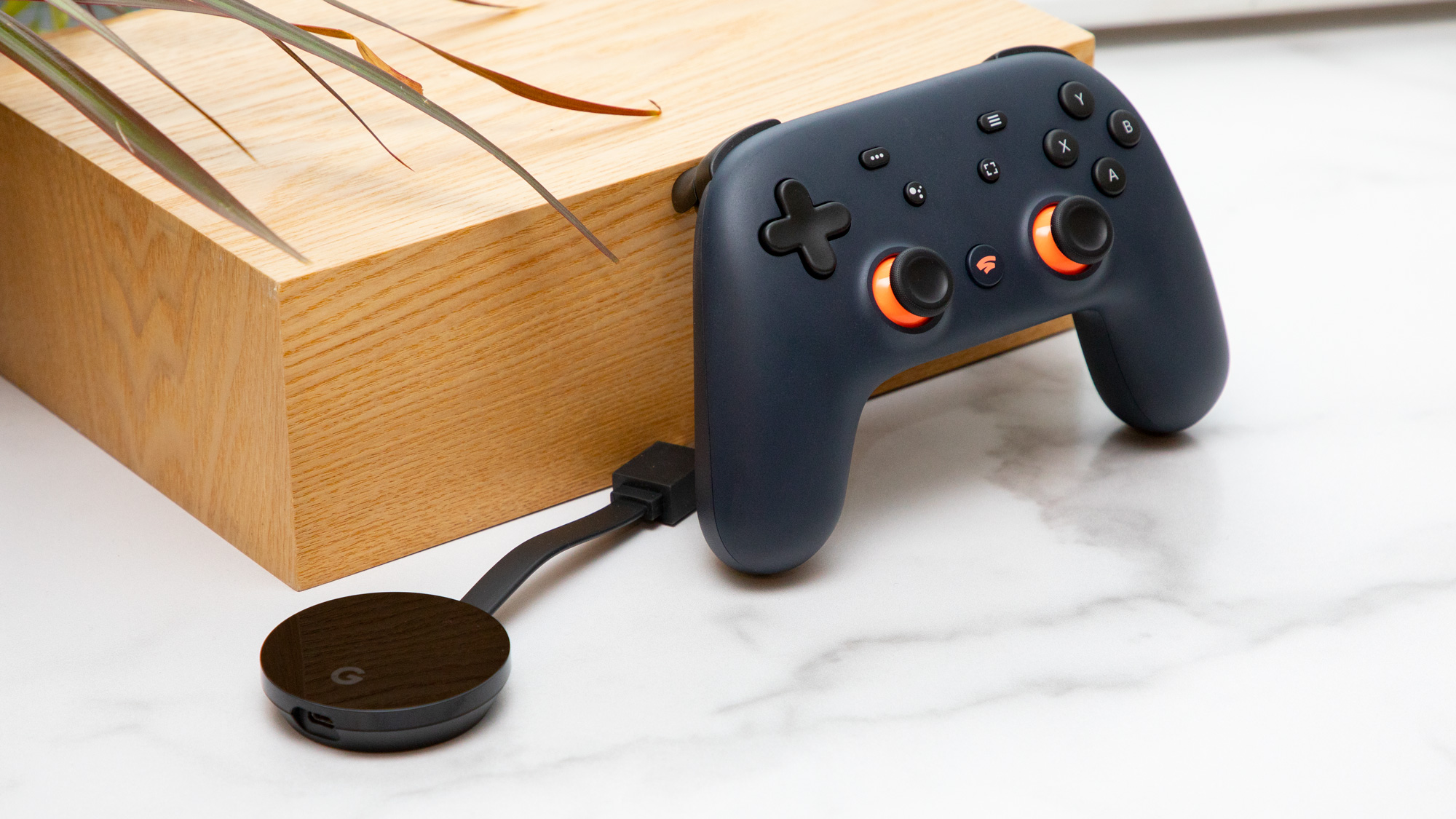
Instead, you have to launch a game, and then tell that game to start casting to the Chromecast. It's an unbelievably complicated process, and I'm still a little surprised I got it working through sheer trial and error. (I tapped on the "Help" links multiple times during the setup process, but they just led me to a generic support page without specific answers or walk-throughs.)
Even after going through all that, you'll still have to link Stadia to the Chromecast separately once you're done with your first play session. There simply has to be an easier way to get Stadia up and running on TVs, computers and smartphones.
Google Stadia review: Performance
Google Stadia lives or dies based on one criterion: Can it stream games seamlessly? The short answer is "yes." The longer answer is "yes, under ideal circumstances."
In either case, Stadia's performance is promising at worst, and impressive at best. Sitting in my bedroom, controller in hand, streaming Shadow of the Tomb Raider at 4K resolution, HDR color and 5.1 surround sound without a console anywhere in sight, I couldn't help but feel a little astounded. If this is the future of gaming, I could get used to it, at least on some level.
Google gave me about half-a-dozen games to play while testing Stadia, and I spent most of my time with Shadow of the Tomb Raider, Gylt and Just Dance 2020.
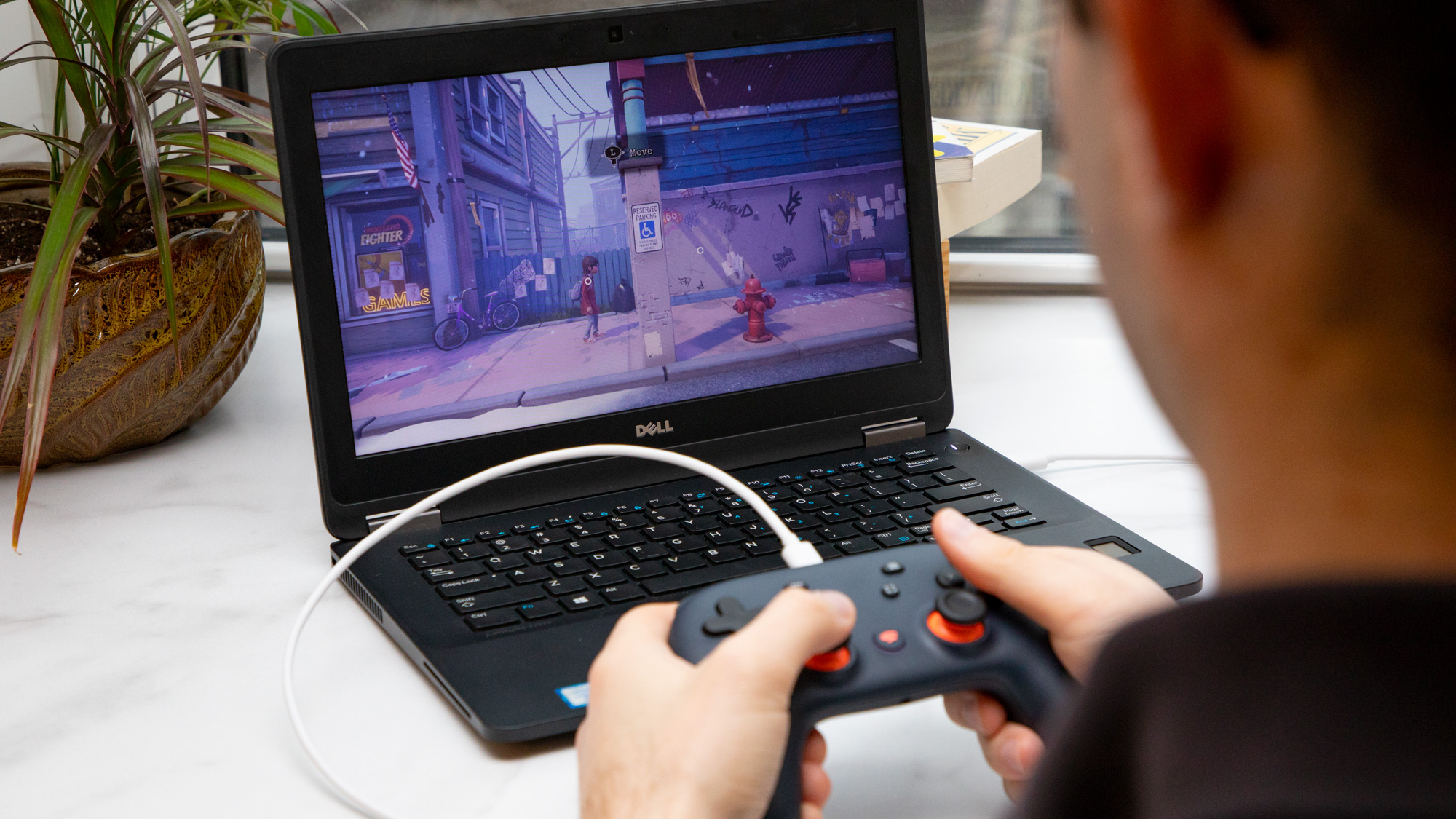
The first is a straightforward action/adventure game — a very "video game-y" video game, for lack of a better term. It was easy to play for hours on end, which meant it was easy to evaluate how Stadia works over a long period.
Gylt is currently Stadia's lone exclusive title, while Just Dance 2020 requires split-second accuracy for appropriate scoring. If Stadia lagged, even a little, Just Dance 2020 would make it obvious.
First, Just Dance 2020 worked beautifully, even though it requires a smartphone controller, which created a kind of wireless daisy chain that had the potential to go very wrong. The game tracked my every clap, shimmy and twist, silently judging as I butchered some of the greatest pop hits of the past few decades. But the fault, dear reader, was not in the Stadia, but in myself — the Stadia ran the game at a seamless 1080p, just as smoothly as if I'd been using a console.
Gylt performed similarly well. This colorful, unsettling game, about a young girl whose real-world fears begin to take on a paranormal bent, ran well in both 1080p and 4K. I was particularly impressed with the game's rich and robust color palette, juxtaposing the bright reds of Sally's outfit and the yellows of her flashlight beam with the deep blues, blacks and grays of the frightening world around her.
Shadow of the Tomb Raider is where I started to notice slight problems with Stadia — and they were at least partially due to my own connection. But it did highlight a much bigger issue with Stadia: There's no way to optimize your connection; at least not on a TV. This can be a pretty significant problem, depending on how fast your connection is and whether you want to use Stadia without an Ethernet cable.
Here's my issue: When I played Shadow of the Tomb Raider on a 1080p TV, the performance was extremely smooth, even though the graphics sometimes had a blurry, washed-out quality that has never been present when I've played Tomb Raider on consoles. The background textures, in particular, were not very distinct. But the framerate was excellent (60 frames per second, or thereabouts), and the game didn't slow down, even during firefights or graphically intense chase sequences.
That all changed when I moved over to a 4K TV, far enough away from my router so that I couldn't run an Ethernet cable to the Chromecast Ultra. My connection was strong enough to get 4K resolution most of the time, but when it wasn't, it was noticeable.
The audio would start to desync, particularly in scenes where Lara had to navigate cluttered environments or contend with a lot of enemies in the same space. Listening to the game's dialogue as if it's playing on a skipping record is not the ideal way to experience this otherwise decent adventure.
However, as I said, I can't hold Stadia responsible for my connection. I thought I would just throttle the connection to 1080p resolution, but there's no way to do that.
The "connection" tab simply tells you how strong your internet signal is, while the "Data usage and performance" tab in the mobile app gives you only three options: Best visual quality (up to 4K), Balanced (let Stadia determine optimal conditions — which is what was causing the problem in the first place) or Limited data usage, which caps things at 720p. None of these offered an appropriate solution.
I had much more consistent experiences when I played games on a computer, or on a smartphone, provided that I had a strong Wi-Fi signal. But while it's impressive to play something like Mortal Kombat 11 on a tiny screen, it's not a great way to experience a game intended for a living-room screen — or at least a PC monitor. Even then, I experienced occasional stutters and framerate inconsistencies on both PC and smartphone.
Google Stadia review: Games library
Google Stadia had 22 games available at launch, and over the past few months, we've gotten about 20 more titles. The launch library generally comprised titles that had already been out for some time on other systems, including Assassin's Creed Odyssey, Destiny 2, Shadow of the Tomb Raider and Mortal Kombat 11.
Since then, Stadia releases have generally followed the same pattern, as the platform has added hit games from the last few years. These include Dragon Ball Xenoverse 2, Octopath Traveler and PlayerUnknown's Battlegrounds. Upcoming titles, such as Star Wars Jedi: Fallen Order have also been out on other platforms for a while.
There are a handful of timed exclusives planned, such as Lost Worlds: Beyond the Page, and a true exclusive: Orcs Must Die 3. Beyond that, the Stadia library has grown slowly, and looks like it will continue to do so in the near term.
Google Stadia review: Controller
One thing about Google Stadia that works just fine is its controller. You don't really need it, but if you choose to pick one up, it's no worse than any other major controller. It's got four face buttons, two analog sticks, a D-pad, a few buttons for options and navigation, and two shoulder triggers on each side. The gadget costs $69 by itself, which is pretty steep as these things go, but not unheard of.
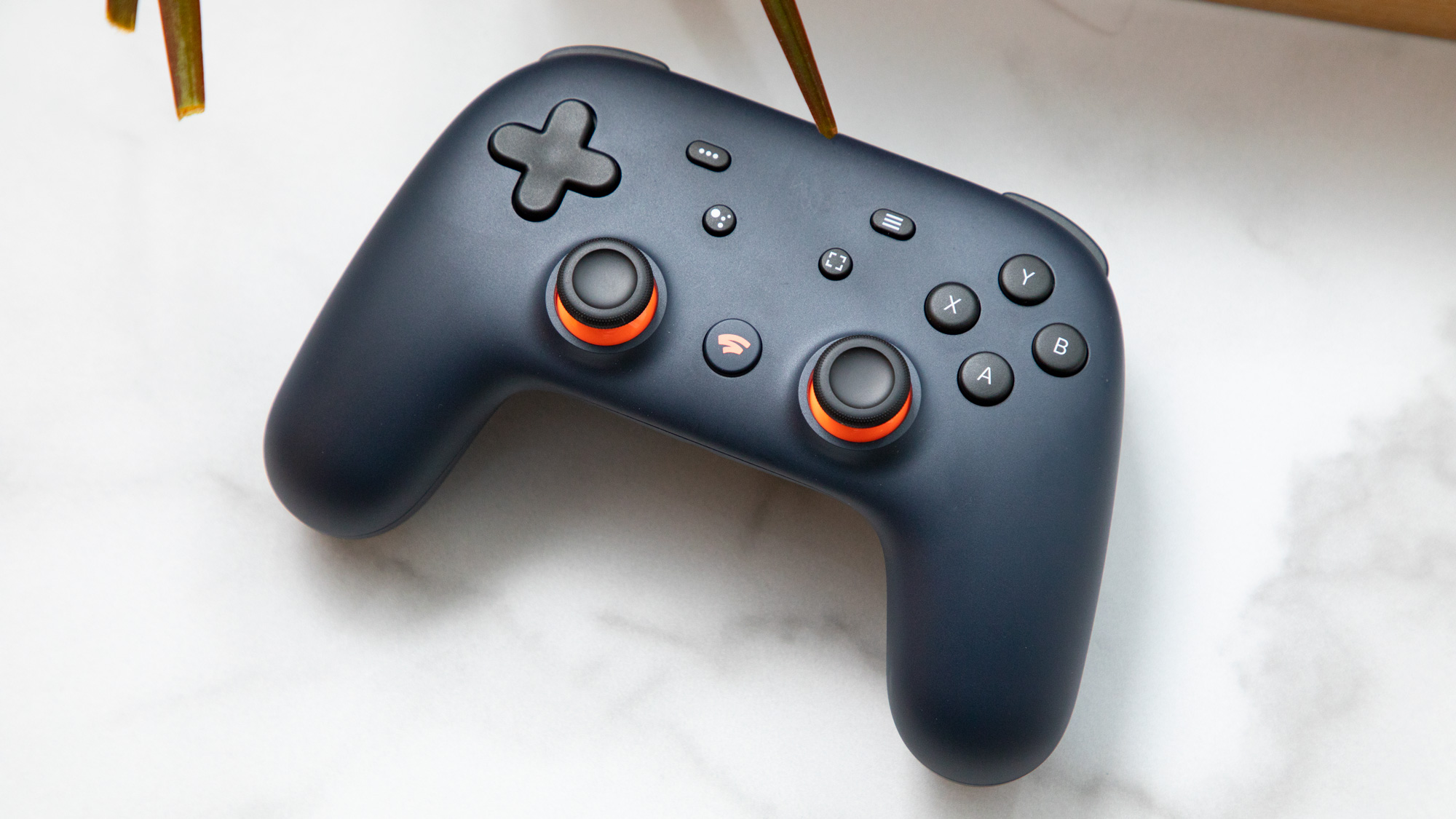
The analog sticks are on the same plane and the D-pad is off to the side, similar to the DualShock 4, but the controller's overall shape is much more similar to an Xbox One — or Switch Pro — peripheral. There's also a 3.5 mm audio port on the bottom so you can connect your favorite pair of headphones.
The controller feels a bit heavier than competing peripherals: 9.5 ounces, compared with 7.4 ounces for the DualShock 4, for example. But overall, it's a comfortable, intelligently designed accessory.
It's also optional: You can simply bring your own controller. Anything with a Bluetooth connection will do, including newer Xbox One controllers, DualShock 4s, Switch Pro controllers and just about any Android controller you can think of. However, at present, only the Stadia controller works with the Chromecast Ultra; if you bring your own peripheral, you can play only on a computer or smartphone. That's a pretty big limitation for a system that prides itself on leveraging hardware you already own.
I didn't have any trouble connecting an Xbox One or a PS4 controller, although I was a little disappointed to discover that the DualShock 4's attractive lighting doesn't activate on a standard Bluetooth connection.
One cool thing about the Stadia controller is that you can use it to boot up Stadia on the Chromecast. You can bypass your smartphone entirely. That's very cool, and I'm not familiar with any other peripherals that let you interact with a Chromecast without a mobile device or computer.
Google Stadia review: Limitations
I didn't have one "big issue" with Google Stadia; I had a cavalcade of smaller issues. It seems that every possible configuration only half works, and that you'll need to make a lot of compromises to get your game running exactly as you want it.
For example, suppose you get home from work and want to kick back with some Shadow of the Tomb Raider on your TV without bothering the rest of your family. You'll need to either plug in a set of analog headphones or hope that your TV itself supports Bluetooth; there are no 2.4 GHz wireless options as Xbox One, PS4 and PC offer.
So let's say that you decide to play it on your PC instead. That's fine. But if you bring your Stadia controller along, you'd better have a USB cable to go with it. You can't connect the Stadia controller wirelessly to anything except a Chromecast Ultra at present. And no, you can't use Stadia with a regular Chromecast at all, even if you want to play at 1080p.
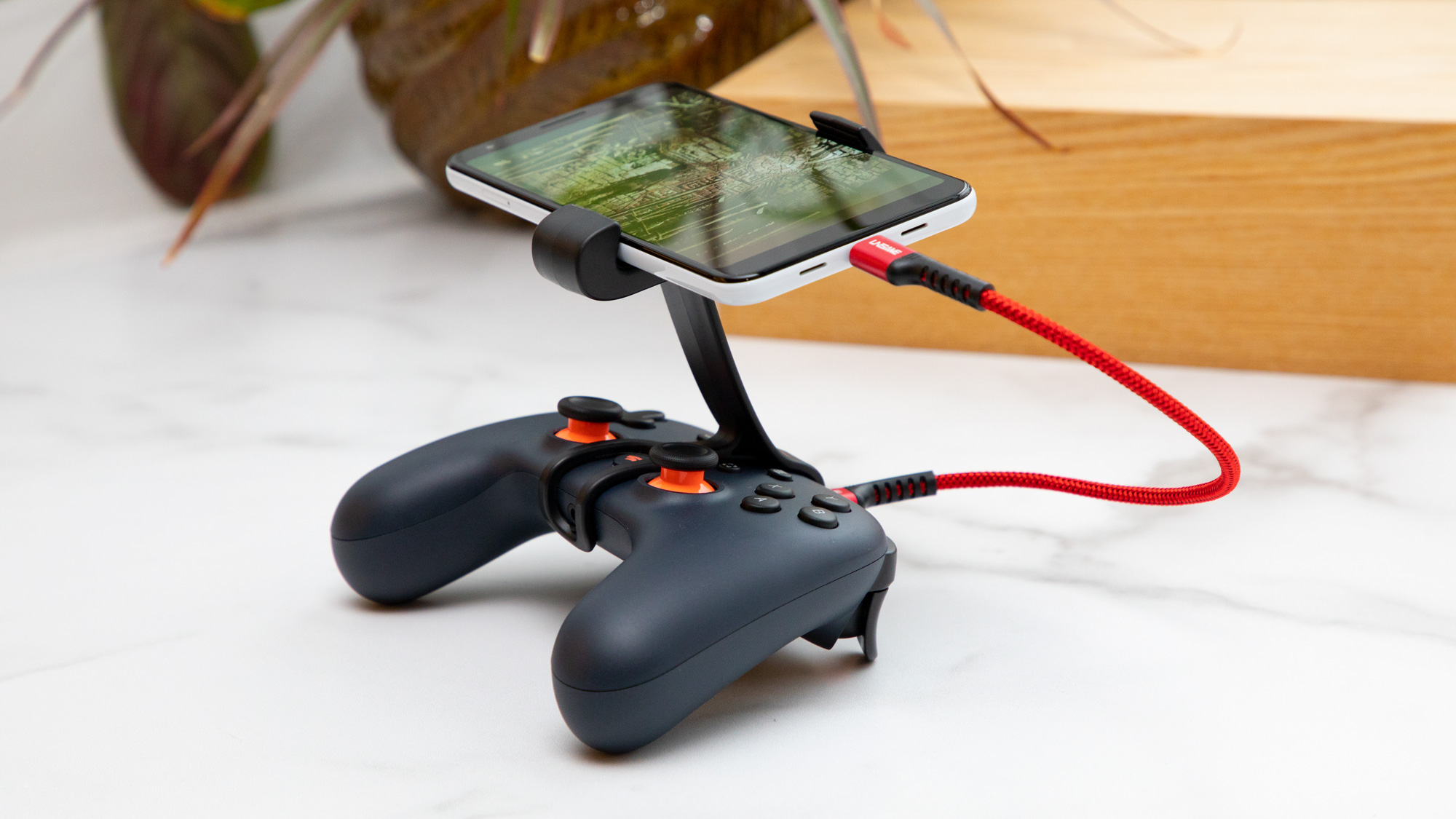
But if TV and PC provide too many roadblocks, playing on a smartphone isn't necessarily any better. First, Stadia was available only on Pixel 2, 3, 3a and 4 smartphones at launch. While the functionality has trickled down to some other Android phones, it's a haphazard selection, and it's unclear when other platforms will become available.
Even then, you'll need a USB-C cable, since the Stadia controller doesn't work wirelessly with smartphones yet, either. Then there's the "claw" smartphone grip, which is difficult to attach and even worse to take apart.

There's also the game selection. The system very nearly launched with a paltry 12 games — most of which you've already had the opportunity to play. Gylt is the only exclusive title, and while it's not terrible, it's not what I'd call a system-seller, either. However, at the last minute, Google added 10 games, including the first two rebooted Tomb Raiders, Final Fantasy XV, Farming Simulator 2019 and Wolfenstein: Youngblood. It's a better lineup, although still stuff that's been out for months, or sometimes years.
There are three ways to play Stadia right now, and all of them are kind of a pain. These features will improve over time, but "everything will be better later" seems to be one of the big themes with Stadia. At present, just about everything about the experience of playing games on a console or PC is better.
Google Stadia review: Price
If you want the standard Google Stadia package, you'll need to dish out $129 for the Premiere Edition. This includes a Chromecast Ultra, a Stadia Controller and a three-month subscription for Stadia Pro, which includes some complimentary games.
You can also subscribe to Stadia Pro by itself. The service costs $10 per month, and gives players the ability to play Stadia titles in 4K resolution, with 5.1 surround sound. It will also confer discounts on certain games, as well as the occasional free title.
Stadia's free tier, Stadia Base, is finally up and running, five months after Stadia launched. This lets players buy and play whichever Stadia games they want, without any overhead fees. However, the streaming quality will cap out at 1080p.
No matter which version of Stadia you get, you'll have to buy games individually. They range between $30 and $60, although they could get cheaper or more expensive in the future.
Google Stadia review: Bottom line
This is the phrase that's kept cycling through my head: "I wish I were playing on a console."
When it's firing on all cylinders, Stadia works fine. But when it's not, it introduces a whole host of problems that traditional gaming systems simply don't have. The ability to take my games anywhere was not incredibly helpful, either. Stadia games require an internet connection, and massive amounts of data: anywhere between 4.5 GB and 15 GB per hour.
That means you can't use Stadia on a cellular data network, and you can't use it on a subway. You almost certainly can't use it on a bus, plane or any other location with slow, crowded Wi-Fi. Even using it at a hotel might be troublesome.
I would wager that every traveler has some kind of horror story about a vital email message not sending when it needed to. I can't imagine that most hotel networks would treat a data hog like Stadia any better.
But maybe Stadia isn't really for traveling. Maybe it's just for playing games on any screen in your house. Still, you can already do roughly the same thing with a PS4 or an Xbox One through their Remote Play and Play Anywhere features, respectively. (To be fair, you can't stream Xbox games to a smartphone screen.)
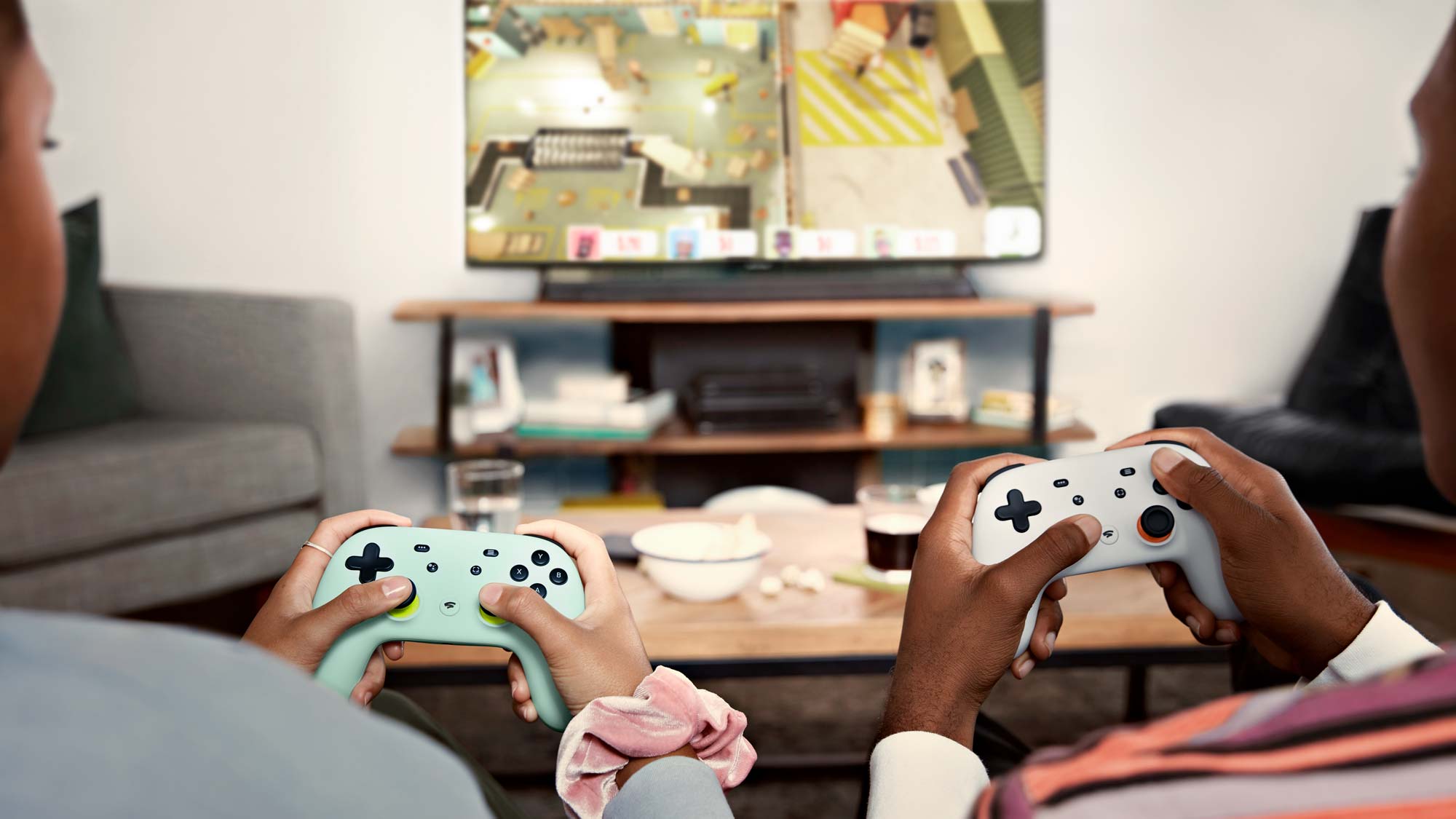
The biggest strike against Stadia, though, is that streaming games instead of downloading them doesn't offer many advantages. True, you never have to wait for installation or patches, but these are infrequent occurrences, and if your connection is good enough for Stadia, it should also be good enough to download games fairly quickly.
You can indeed play games without a console or a gaming-quality PC, but if you're starting from scratch, it still costs $129 for a Chromecast Ultra and a Stadia controller. Throw in a $60 game, and you're within spitting distance of a starter console.
It occurred to me while playing that Stadia is the germ of a great idea, but insisting that games must be all-streaming, all the time feels a little limiting. I would much rather have the option to download a game on a PC or a console and still be able to stream it to less-powerful devices, like smartphones and streaming boxes. That would be the best of both worlds, and indeed, Microsoft's Project xCloud seems to aim for such a system.
In the meantime, Stadia works and has the potential to work well. But it's missing many of its most important features, and I’m still not convinced that game-streaming is necessary or convenient.
If Stadia sticks around for a few years, it has the potential to get better. If not, it will not be Google's first project that didn't work out.

Marshall Honorof was a senior editor for Tom's Guide, overseeing the site's coverage of gaming hardware and software. He comes from a science writing background, having studied paleomammalogy, biological anthropology, and the history of science and technology. After hours, you can find him practicing taekwondo or doing deep dives on classic sci-fi.

